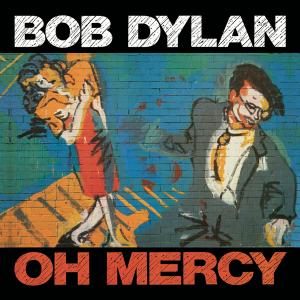
Oh Mercy (1989)

1. Political World
2. When Teardrops Fall
3. Everything is Broken
4. Ring Them Bells
5. Man in the Long Black Coat
6. Most of the Time
7. What Good Am I?
8. Disease of Conceit
9. What Was it You Wanted
10.Shooting Star
In the latter half of the 1980s—a period often marked by Dylan’s own creative malaise—Oh Mercy emerged as a startling exception. The album didn’t merely represent a return to form; it suggested the embers of artistic renewal, flickering to life when many had assumed the fire had all but burned out. Whether spurred by lagging sales, a sense of restlessness, or some unspoken realization that recent releases had sounded directionless and weary, Dylan chose this moment to collaborate with an unlikely but inspired partner: Daniel Lanois.
Lanois, better known at the time for his work with the atmospheric pop landscapes of Peter Gabriel and U2, may not have seemed an obvious fit for Dylan’s earthy minimalism. And yet, therein lies the surprise. A great producer does not enforce an identity; he teases out an artist’s latent possibilities. In this, Lanois excelled. He gave Dylan space to breathe while cloaking the album in a sonic mist that was at once intimate and cinematic. It was a careful layering—never gaudy, never gratuitous—that allowed Dylan’s increasingly gravelled voice to resonate with newfound poignancy.
The record is front-loaded with Political World, the one track that stomps rather than sways, but from there, the mood deepens, becoming more introspective and controlled. Most of the second half consists of hushed, inward-looking ballads—songs that seem more whispered than sung. And yet, despite their sparseness, the tracks never feel skeletal. Rather, they are imbued with texture: gentle echoes, ambient shimmers, and subtle instrumental inflections that elevate the whole to a level Dylan hadn’t approached in years.
Vocally, Dylan is no longer the spry poetic wanderer of the 1960s. By Oh Mercy, he has transformed into a kind of weary sage. His delivery, ragged and timeworn, lends an aching credibility to songs such as Most of the Time and Shooting Star. Here, he is reflective, not reactive; wistful rather than bitter. It's as if he has relinquished the need to define the world and is instead content to observe it from the shadows.
Some albums feel of their time; Oh Mercy feels of a time of day—specifically, night. It’s an album best experienced in quietude, perhaps in the company of strangers or solitude, beneath dim lights and slow conversation. It doesn’t preach, it doesn’t pose—it lingers. And in doing so, it confirms that even in artistic twilight, Dylan had not lost his way. He had, in fact, found another one.
Go back to the main page
Go To Next Review